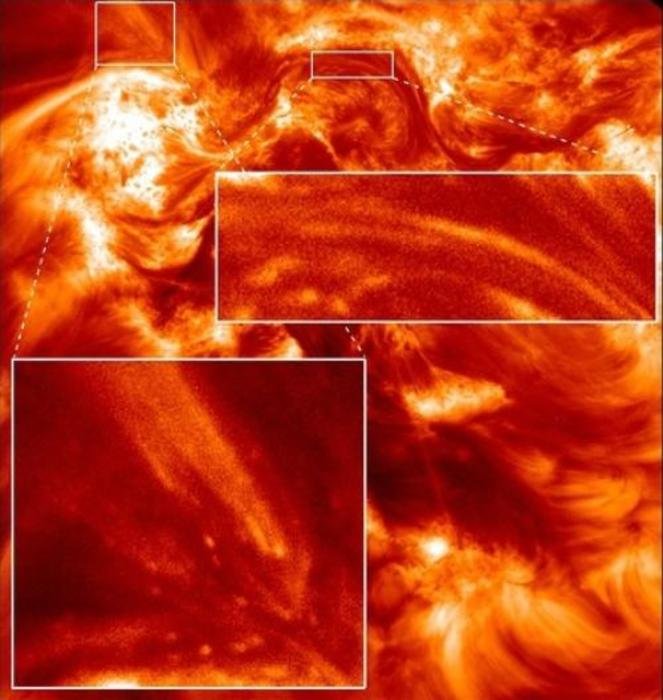PRESTON, England, July 1 (UPI) -- British scientists say an innovative new camera on board a sounding rocket has captured the sharpest images yet of the sun's outer atmosphere.
Researchers at the University of Central Lancashire, working with U.S. and Russian colleagues, report the NASA High Resolution Coronal Imager they helped develop discovered fast-moving "highways" and intriguing "sparkles" that may help answer long-standing questions about coronal mass ejections that carry billions of tons of plasma into space.















